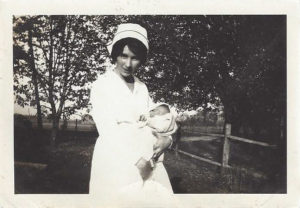Tell it True, my new novel (coming soon!), is fiction.
Jeannette de Beauvoir quotes a journalist friend in her piece entitled “Is Fiction a Lie?”: “Reporters write about facts, novelists write about truth.”
I wonder, though, when does fiction become truth?
Truths about being human—loyalty, courage, betrayal, forgiveness, hope, despair, misunderstanding, outrage, joy—all can be conveyed in the ground of a story.
All that it is to be human is written into the story of 21st century Emmaline Cartwright and 18th century Kate Robinson, fictional women living in real worlds where real life happened in real time.
Emmaline Cartwright is a professor of North American Colonial History—a fictional character, to be sure. Yet she has feelings and life moments that I as an author and a woman know about, and that I’ve experienced. I hope readers will say, “I understand. I’ve been there.”
Emmaline arose from my imagination, and she quickly became real. The truths revealed about her despair, her restlessness, her unrealized life, and her hopes all coalesce to become someone readers might know, or understand from somewhere inside themselves.
But what of Kate Robinson, a Loyalist woman living during the American War of Independence, who unravels her life and transforms the predictable into the unpredictable? How much can we as readers, currently living our present-day lives, relate to her, a fictional woman living in an era we only read about in history books?
Historian and Loyalist expert Janice Potter-MacKinnon writes, “While it is common to lament the fact that women are often denied their rightful place in history, it is only rarely that historians have the opportunity to trace the process by which this occurs. The Loyalist women who left the frontiers of the American colonies in the late 1770s and 1780s, and were resettled in what is now eastern Ontario, offer historians such an opportunity. Patriot and British records show the significant role these women played in the American Revolution on the Northern Front.” (While the Women Only Wept: Loyalist Refugee Women in Eastern Ontario. McGill-Queen’s University Press, 2003.)
So my writing work is cut out for me: to write the story of Kate Robinson living in a turbulent time, making life-changing decisions, and also to, as accurately as possible, put my reader in her 18th century shoes, grounded in her times.
Emmaline Cartwright finds herself in the depths of Kate’s story. Time separates these two women, but the truths of themselves they hold as women entwine their stories.
The theme of life as an ongoing truth-telling expedition underlies my new novel, a novel that revealed for me truths about my own journey.
To be continued…

 An important character in The Shelter of Each Other is Sophie Watson. She represents the “wise person” I choose to believe we have in all of us. Sophie takes on the promises that each woman, openly or silently make to one another. In many ways she is the promise of constancy throughout the unanticipated and the stunning events that life offers up.
An important character in The Shelter of Each Other is Sophie Watson. She represents the “wise person” I choose to believe we have in all of us. Sophie takes on the promises that each woman, openly or silently make to one another. In many ways she is the promise of constancy throughout the unanticipated and the stunning events that life offers up.